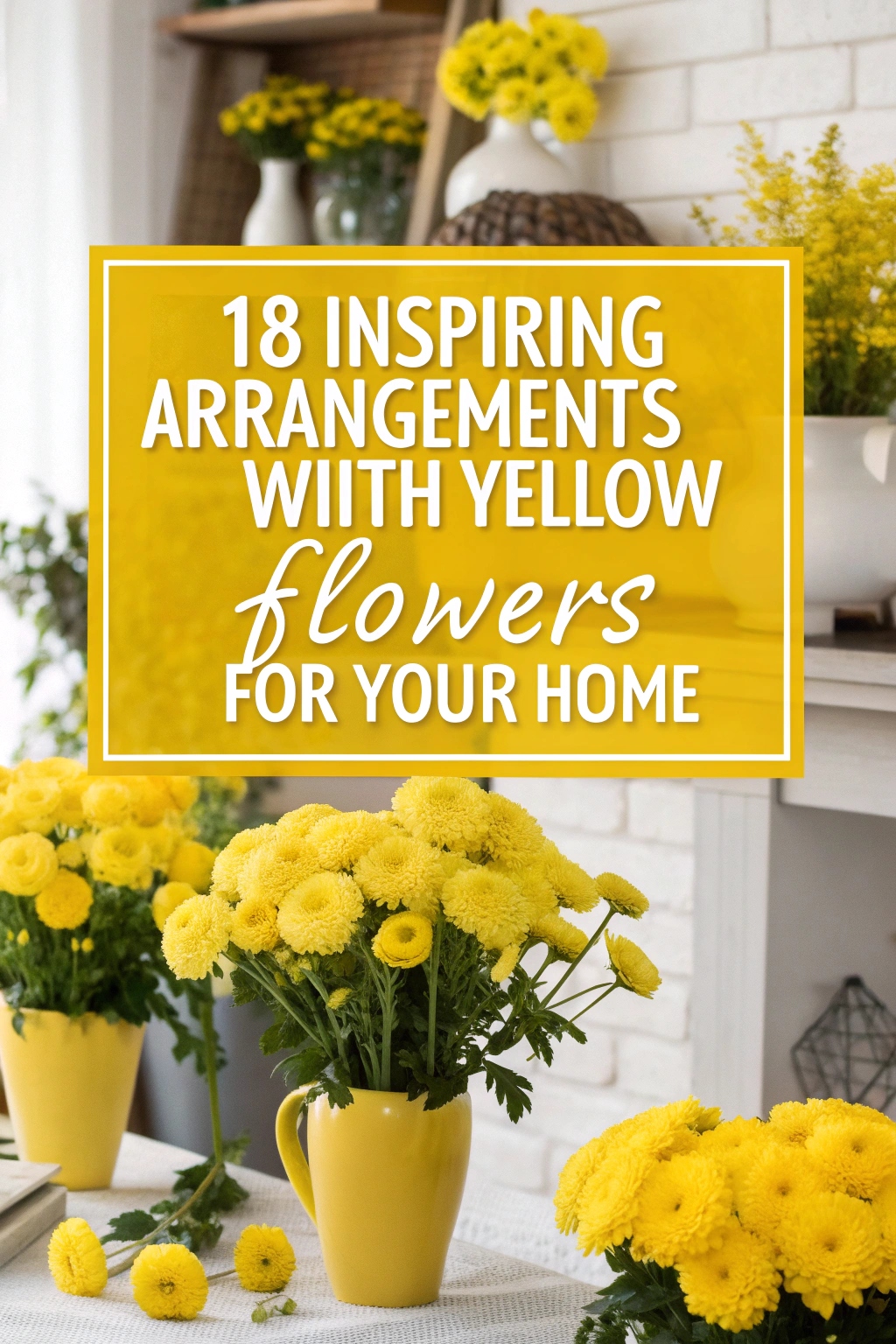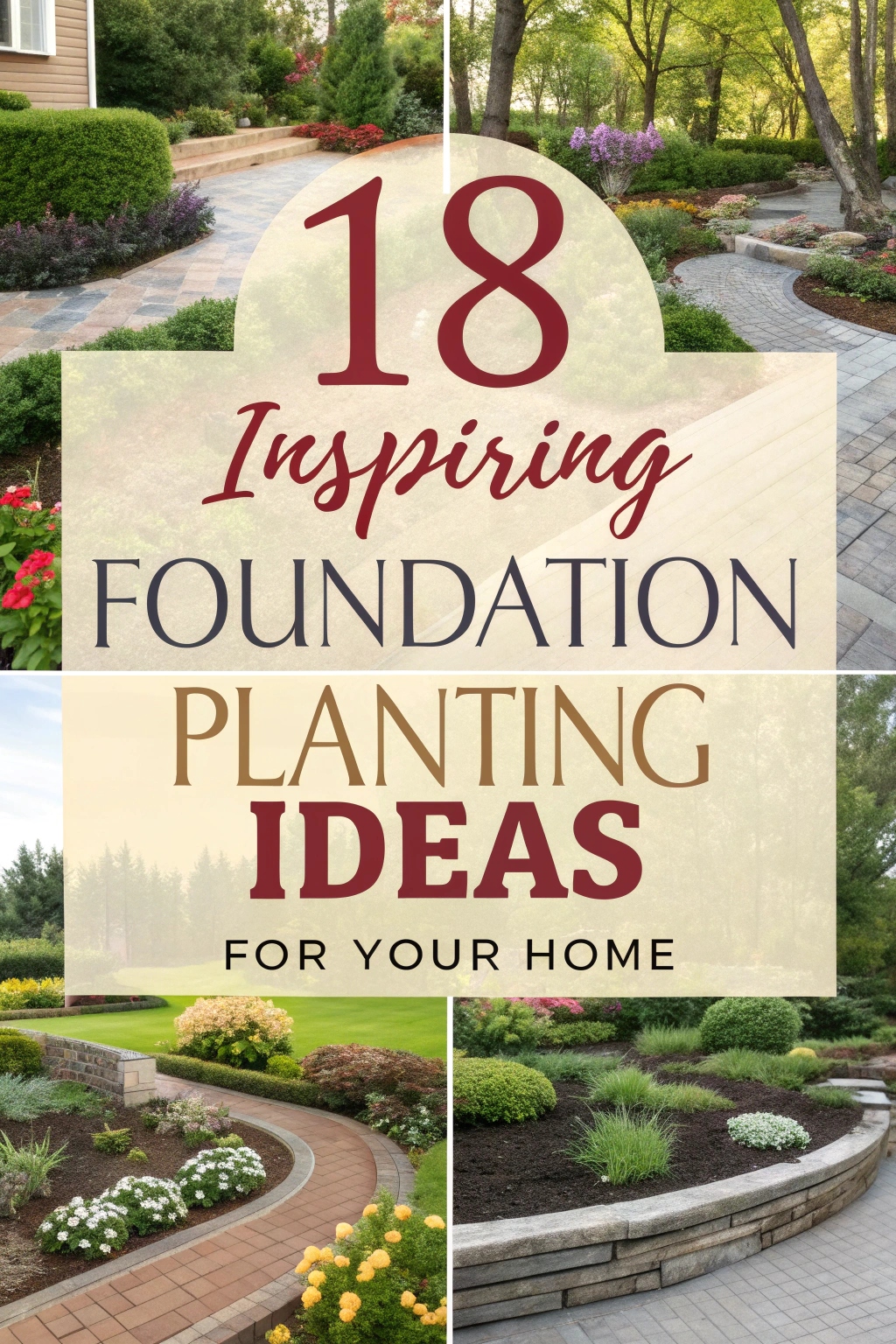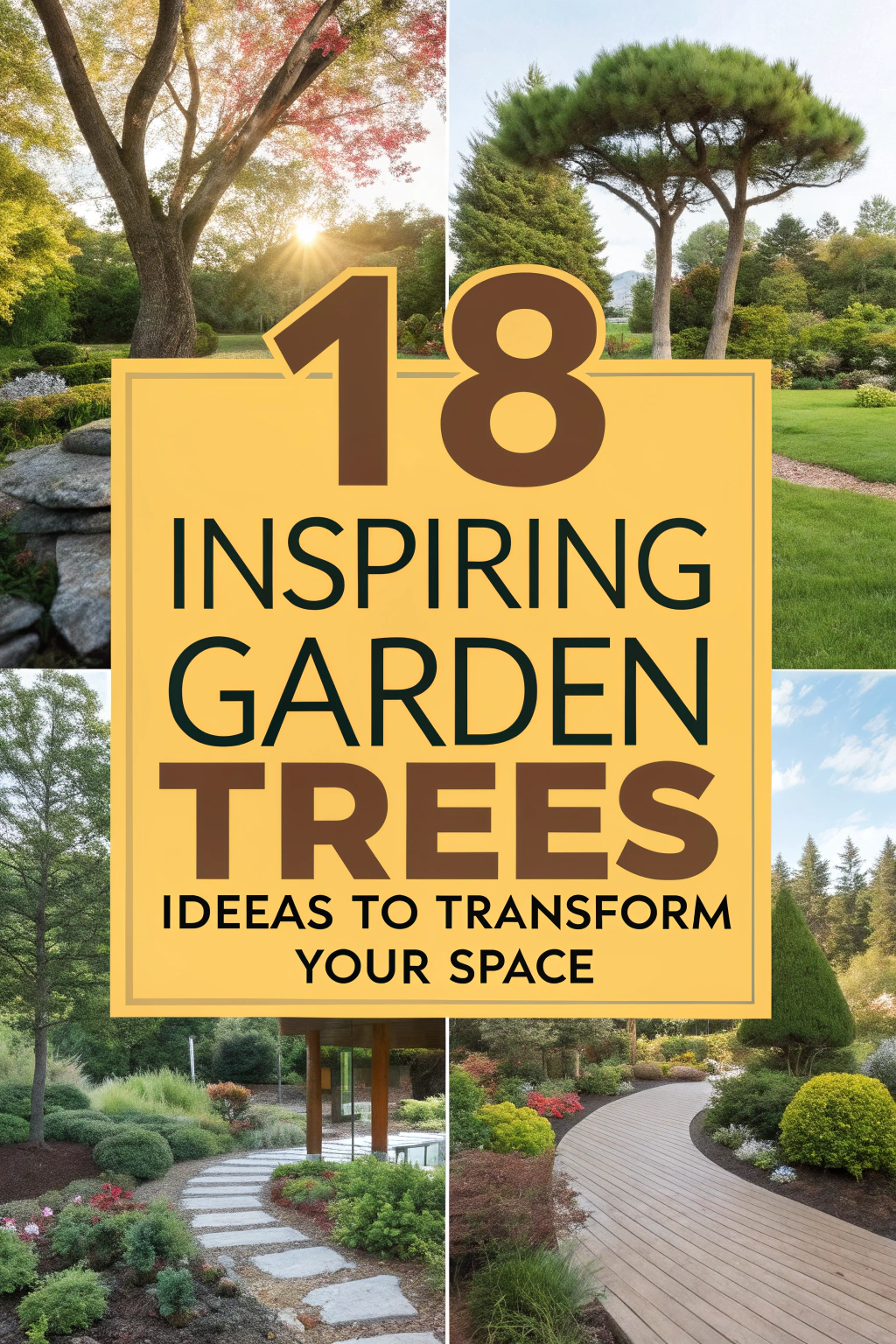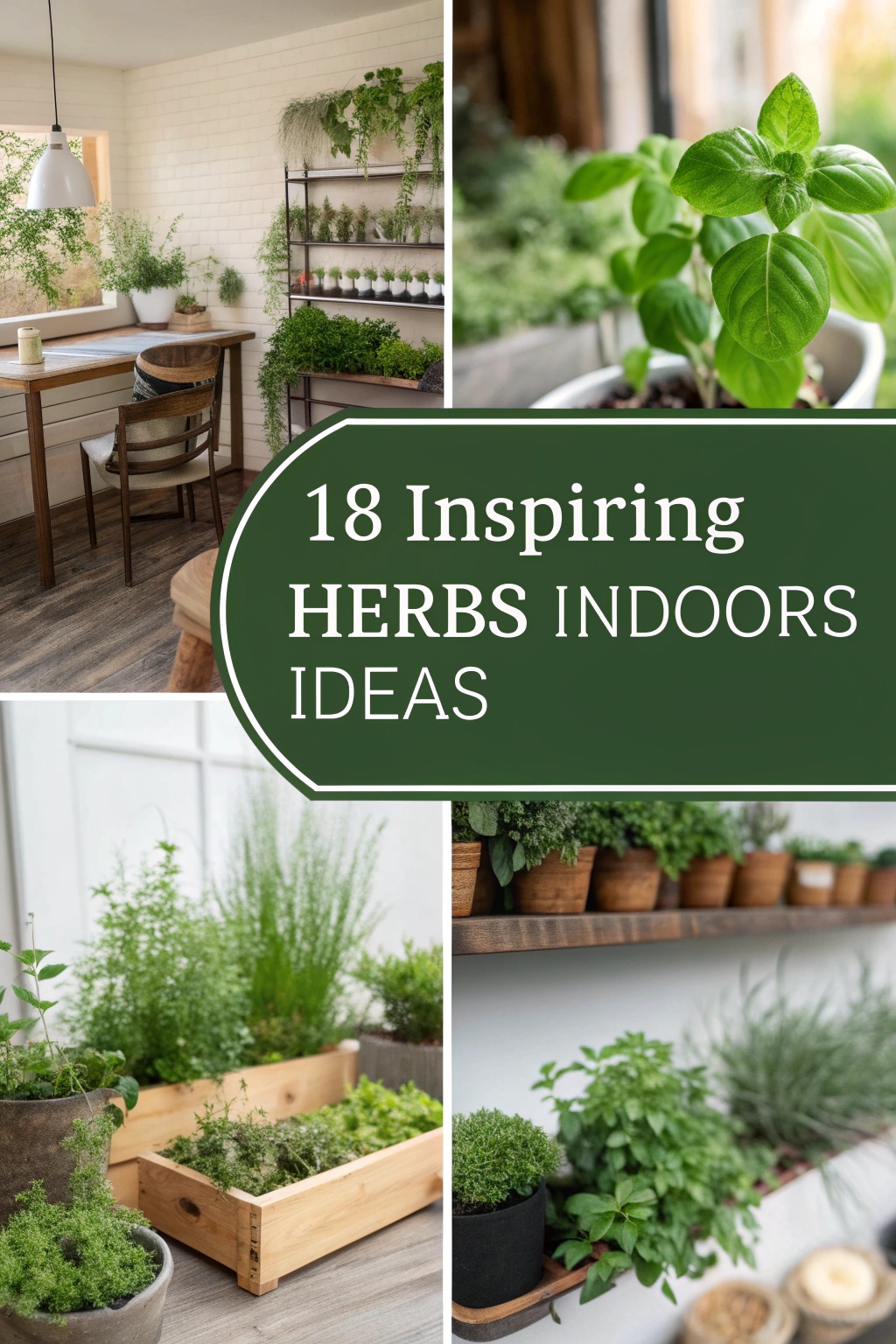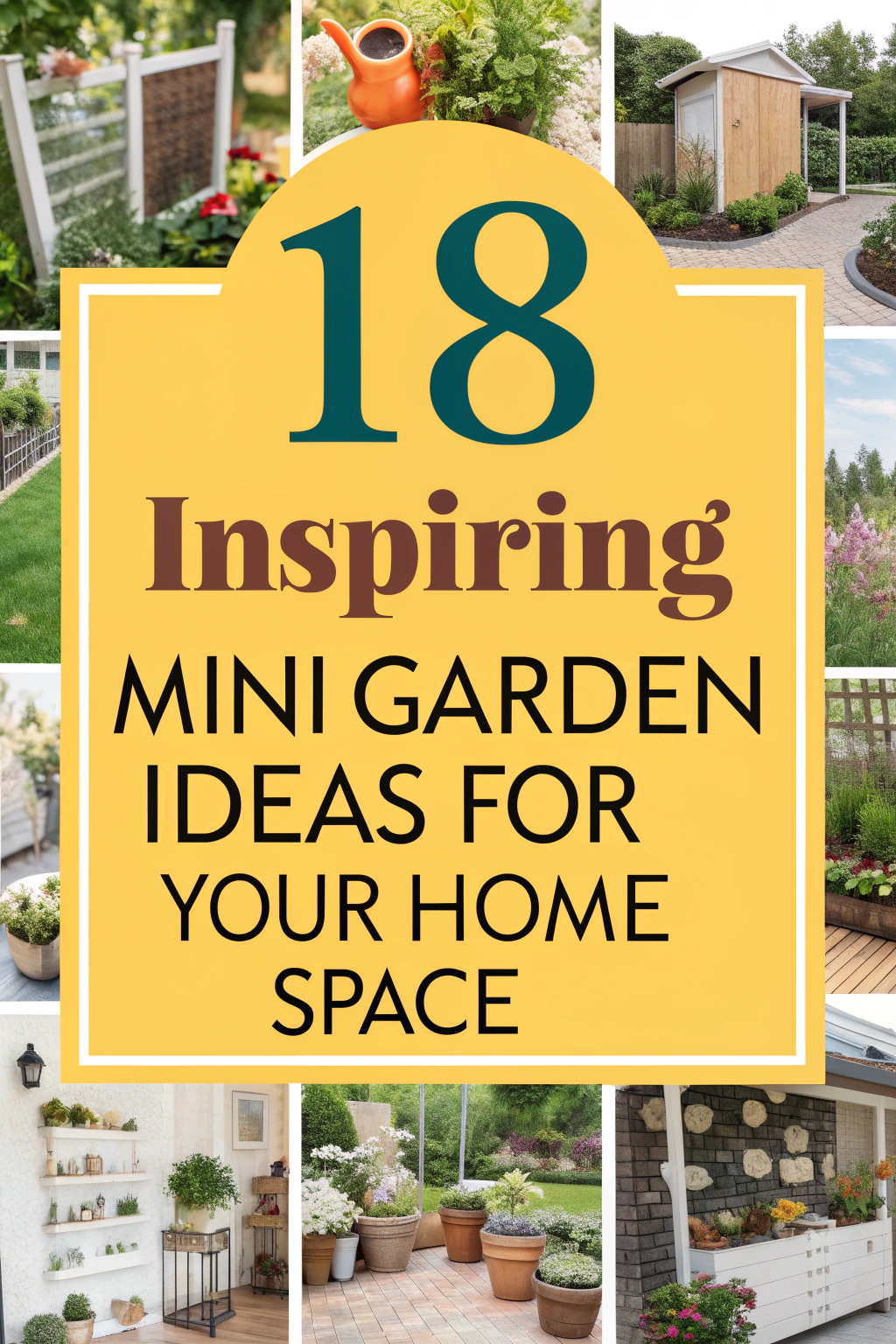17 Gardening Ideas for Roof Top That Will Inspire You
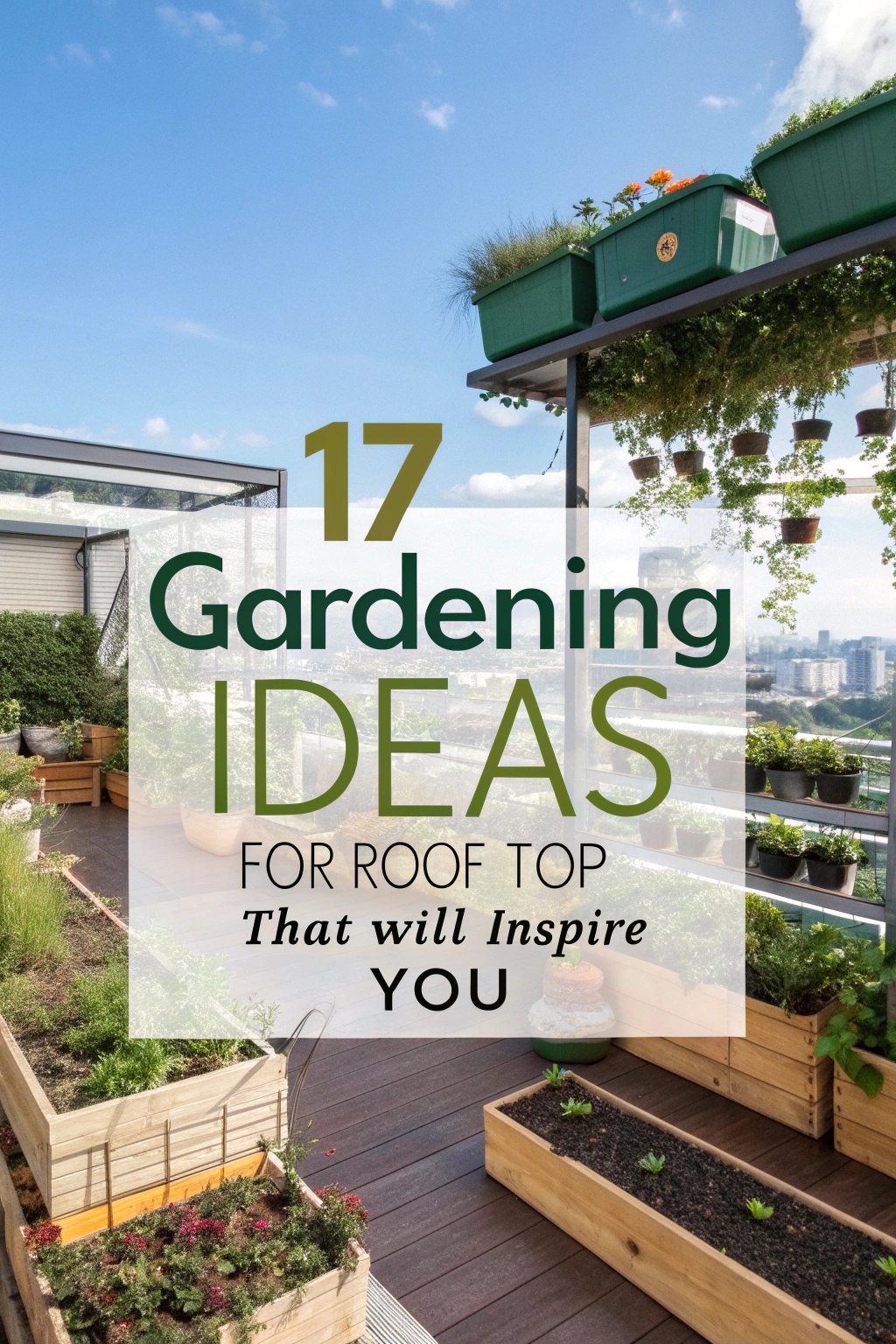
Transforming your rooftop into a lush oasis isn’t just a dream—it’s entirely achievable. With clever gardening ideas tailored for limited spaces, you can cultivate herbs, vegetables, and ornamental plants, all while adding a touch of creativity. Imagine a vertical garden bursting with color or a cozy herb spiral inviting you to cook with fresh ingredients. Intrigued? Let’s explore how you can elevate your rooftop space into a sustainable, beautiful retreat.
Vertical Gardens for Limited Space
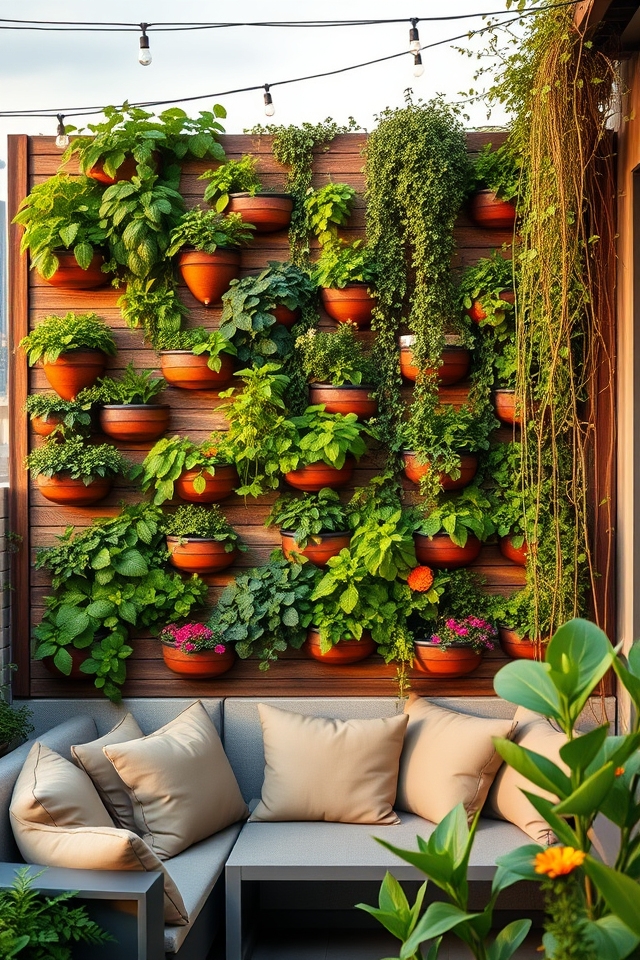
Vertical gardens are an excellent solution for maximizing greenery in limited spaces, especially on rooftops. These innovative setups allow you to grow plants upward rather than outward, utilizing trellises, wall-mounted planters, or vertical garden systems. Ideal for herbs, flowers, or even vegetables, vertical gardens not only enhance aesthetics but also improve air quality and provide insulation. They are perfect for urban dwellers looking to transform small spaces into lush, vibrant retreats.
Container Gardening: Perfect for Any Roof
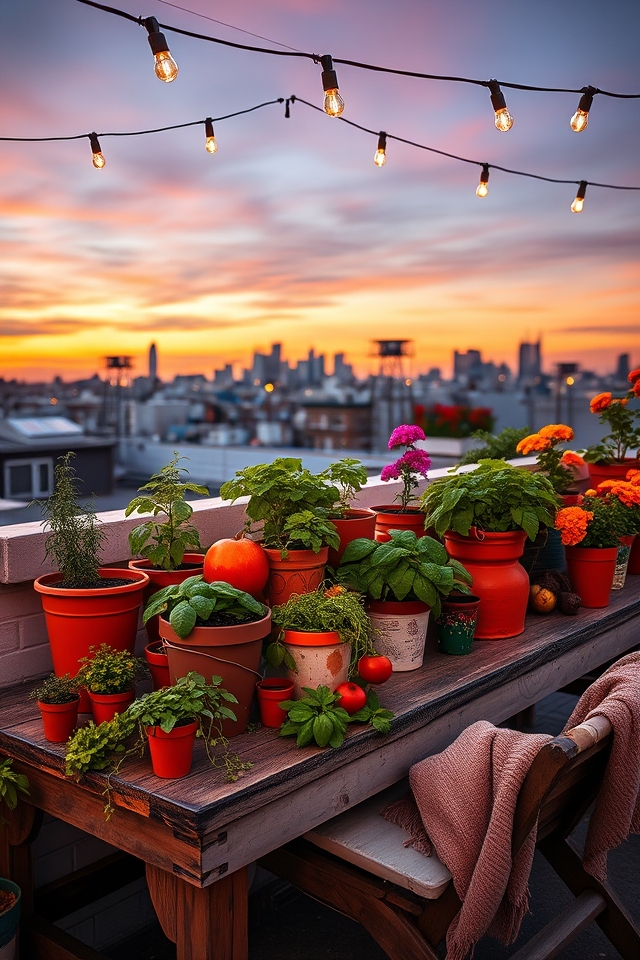
Container gardening is an ideal solution for rooftop gardens, allowing you to maximize space while adding greenery and vibrancy to your urban oasis. With various container sizes and materials available, you can easily customize your garden to fit your aesthetic and needs. Whether it’s vegetables, herbs, or ornamental plants, containers provide excellent drainage and mobility, enabling you to manipulate your garden’s layout and give your rooftop a personal touch. Embrace creativity and practicality while enhancing your rooftop environment!
Herb Spiral: A Unique Vertical Herb Garden
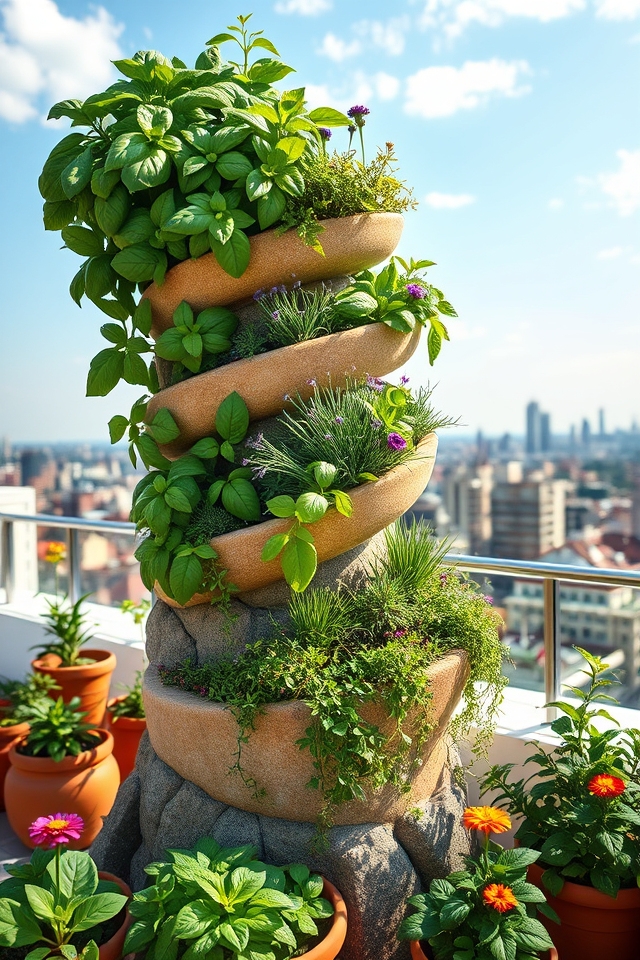
An herb spiral is a creative and efficient way to cultivate herbs in a vertical design, making the most of limited rooftop space. This unique garden features a spiral structure that maximizes sunlight exposure and allows for ideal drainage. As you ascend the spiral, different herbs can thrive in varying microclimates, with fragrant varieties like basil and rosemary at the top, and moisture-loving herbs like mint at the bottom. This concept enhances aesthetics while ensuring easy maintenance and accessibility.
Rooftop Vegetable Patch: Grow Your Own Food
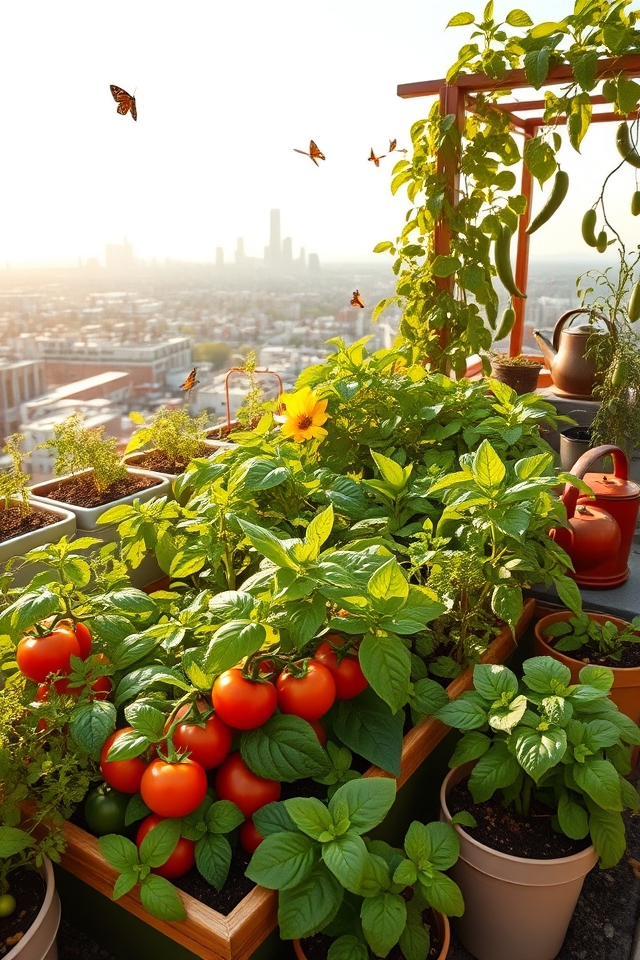
Creating a rooftop vegetable patch is a rewarding way to grow your own food while maximizing urban space. By utilizing containers, raised beds, or vertical gardening systems, you can cultivate various vegetables such as tomatoes, peppers, and herbs. Guarantee adequate sunlight, water drainage, and soil quality for healthy growth. Not only does this project promote sustainability, but it also provides fresh produce right at your fingertips, enhancing your culinary experiences.
Succulent Displays for Low Maintenance Beauty
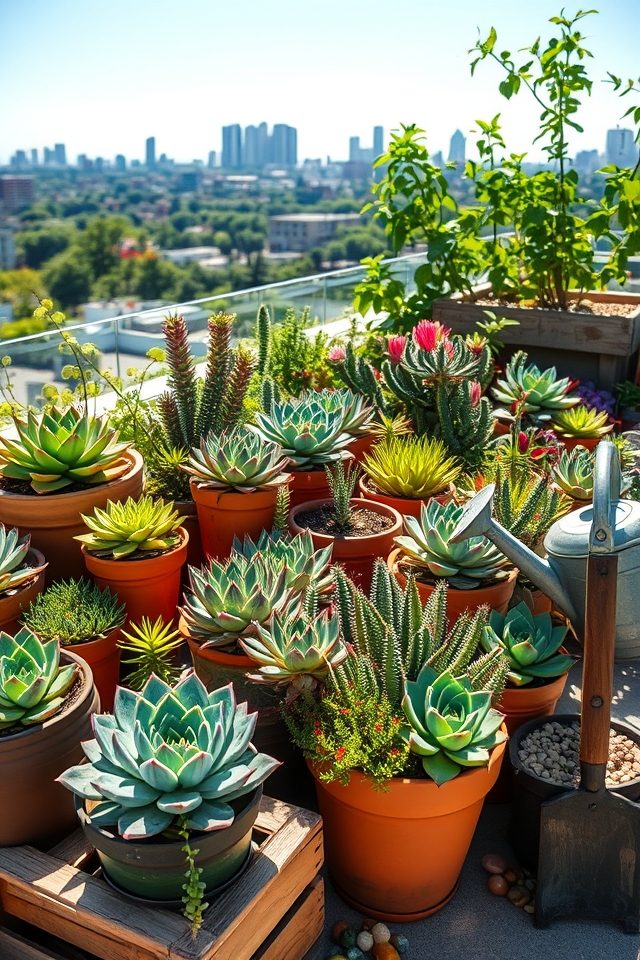
Succulent displays offer a stunning yet low-maintenance option for rooftop gardens. These hardy plants thrive in minimal soil and require little water, making them perfect for busy urban lifestyles. Arrange a variety of shapes, sizes, and colors to create an eye-catching focal point. Use creative containers like terracotta pots or even repurposed materials to add personality. With their resilience and beauty, succulents can transform any rooftop into a serene oasis.
Flower Boxes: Adding Color to Your Skyline
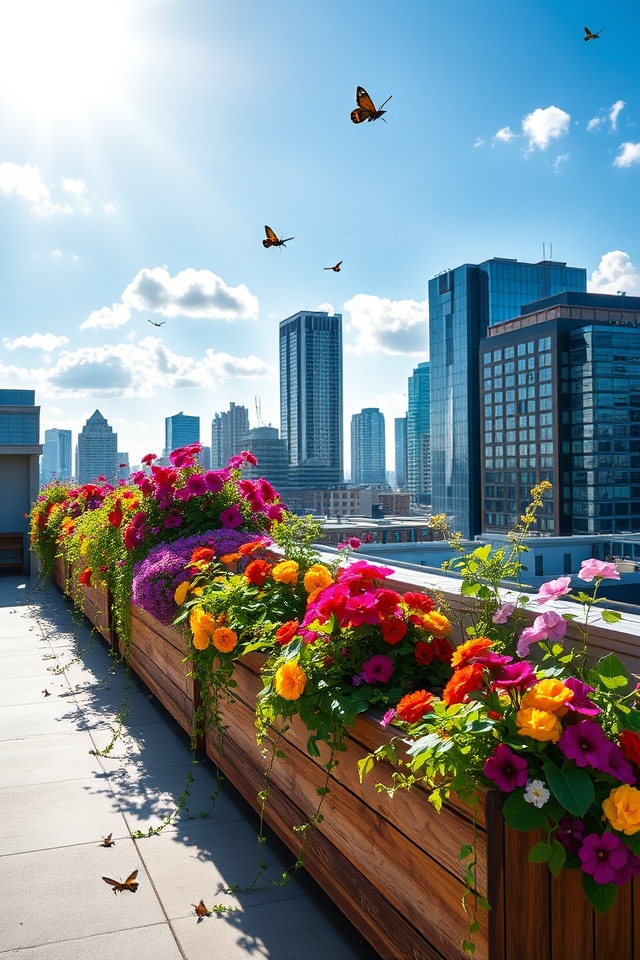
Flower boxes are an excellent way to infuse your rooftop garden with vibrant colors and textures. These containers can be customized to match your style and can be filled with an array of flowering plants, herbs, or trailing vines. Strategically placing flower boxes along the edges of your rooftop can create a stunning visual impact, soften harsh architectural lines, and attract pollinators, all while maximizing your limited space.
Rooftop Fruit Trees in Containers
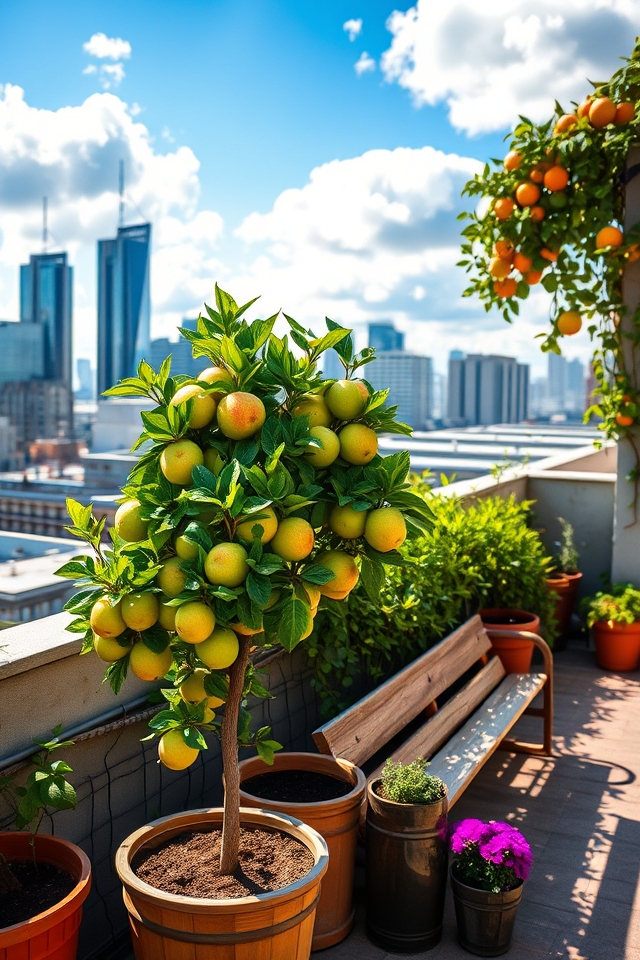
Rooftop fruit trees in containers are an excellent way to maximize limited space while enjoying fresh produce. These dwarf varieties, such as apple, citrus, or cherry trees, thrive in pots, making them perfect for urban gardens. Make certain your containers have good drainage and use quality potting soil. Regular watering and the right sunlight exposure are vital for healthy growth. With proper care, these trees can flourish and provide delicious fruits right from your rooftop.
DIY Garden Furniture: A Cozy Retreat
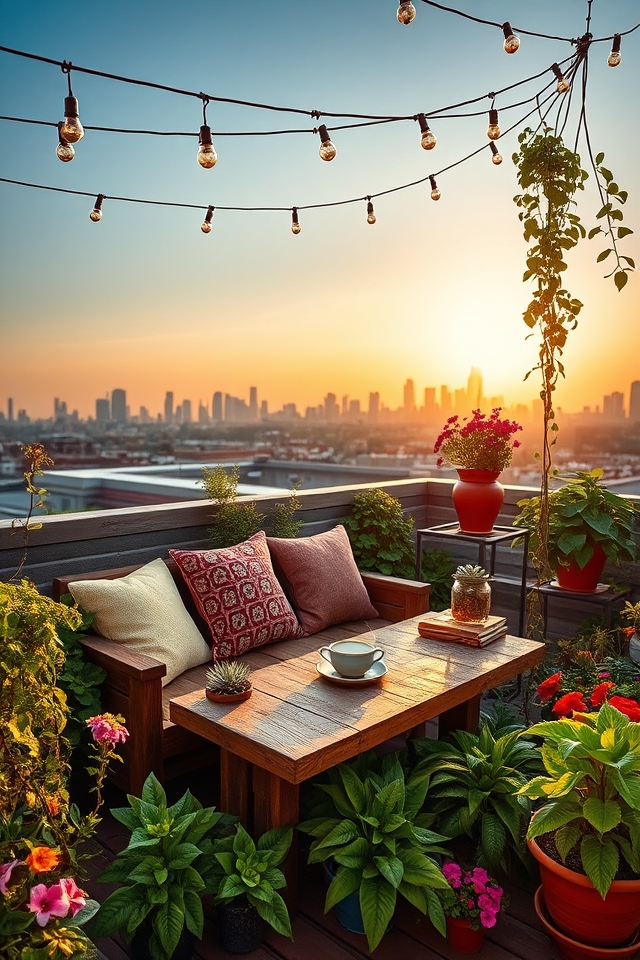
Creating DIY garden furniture for your rooftop garden can transform your space into a cozy retreat. Consider building a wooden bench or a simple table using reclaimed materials to add charm and sustainability. Incorporating cushions and throw pillows will enhance comfort, while string lights can create a warm ambiance. Personalize the space with potted plants and decor to establish a tranquil, inviting atmosphere where you can relax and enjoy your urban oasis.
Greenhouse Tents for Year-Round Gardening
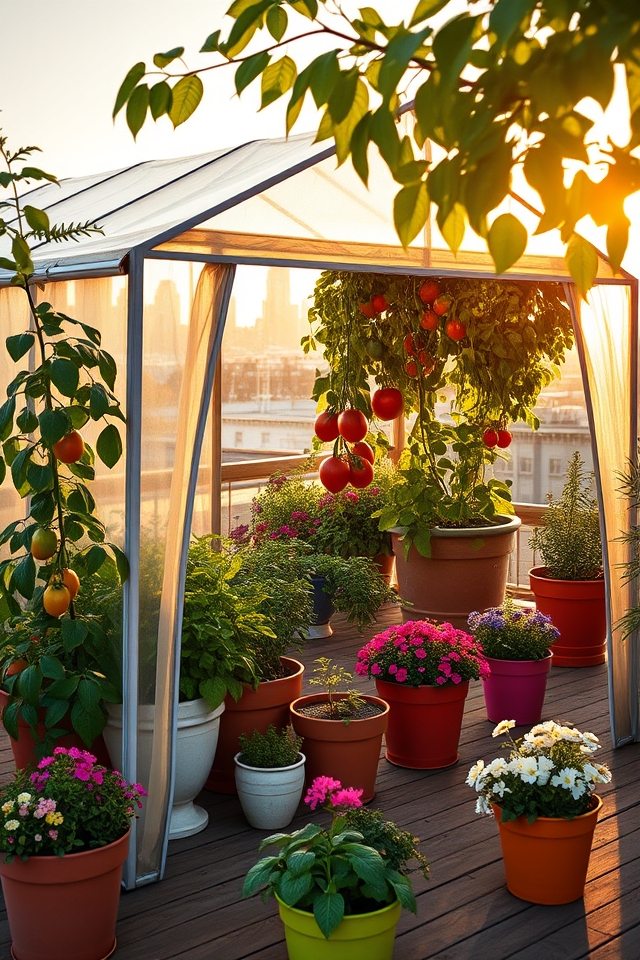
Greenhouse tents are an excellent solution for year-round gardening on rooftops. These portable structures provide a controlled environment, protecting plants from harsh weather conditions and pests. With ample insulation and ventilation options, they allow for extended growing seasons, enabling you to cultivate a variety of vegetables, herbs, and flowers regardless of the season. Plus, their lightweight design makes them easy to set up and relocate, perfect for maximizing limited rooftop space.
Rainwater Harvesting for Sustainable Gardening
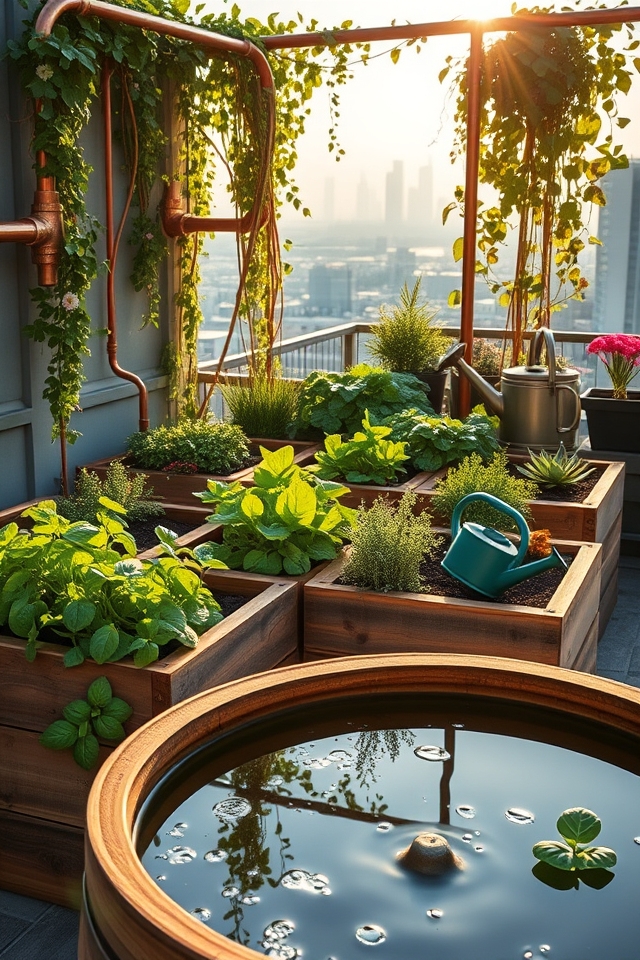
Rainwater harvesting is an eco-friendly technique that captures and stores rainwater for use in rooftop gardens. By installing a simple collection system, such as rain barrels or tanks, gardeners can utilize this natural resource to irrigate their plants, reduce water bills, and minimize reliance on municipal water supplies. This sustainable practice not only conserves water but also promotes healthier garden growth by providing nutrient-rich runoff that enhances soil quality. Embrace rainwater harvesting to create a thriving rooftop oasis!
Fairy Lights and Decor for a Magical Atmosphere

Creating a magical atmosphere on your rooftop garden can be easily achieved with the addition of fairy lights and thoughtful decor. Drape twinkling fairy lights along railings, around plants, or overhead to cast a warm glow as evening falls. Incorporate whimsical decor such as lanterns, wind chimes, and colorful cushions to enhance the ambiance. These elements not only add charm but also create a cozy space for relaxation and gatherings under the stars.
Edible Landscaping: A Functional Garden Design
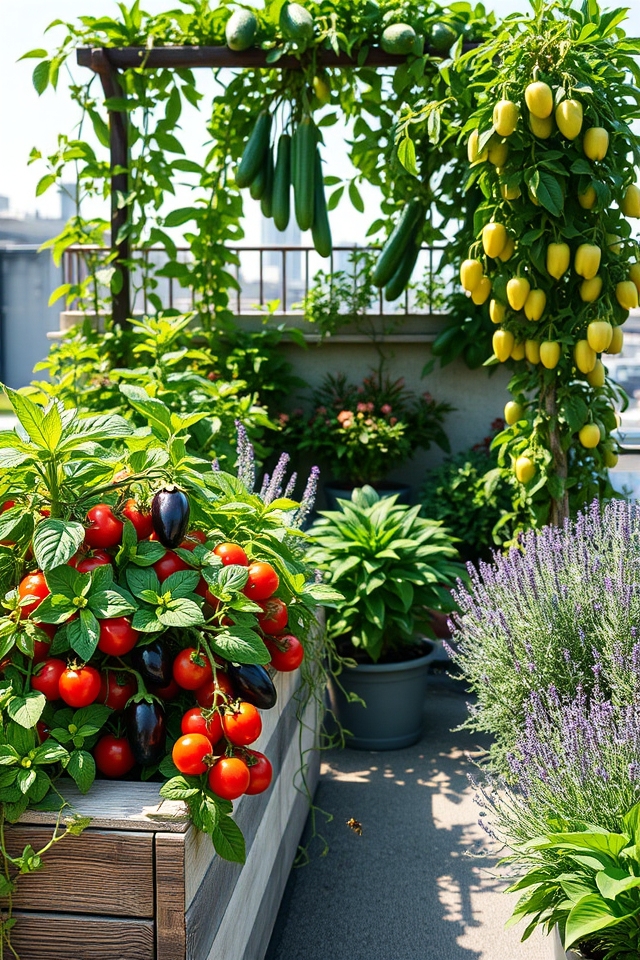
Edible landscaping combines beauty with functionality, allowing you to grow a variety of edible plants, fruits, and herbs in your rooftop garden. This design transforms your outdoor space into a productive haven while enhancing the aesthetic appeal. By selecting visually pleasing plants, such as colorful vegetables, flowering herbs, and fruit-bearing shrubs, you can create an inviting environment that not only delights the senses but also provides fresh produce right at your fingertips.
Insect Hotels: Promoting Biodiversity
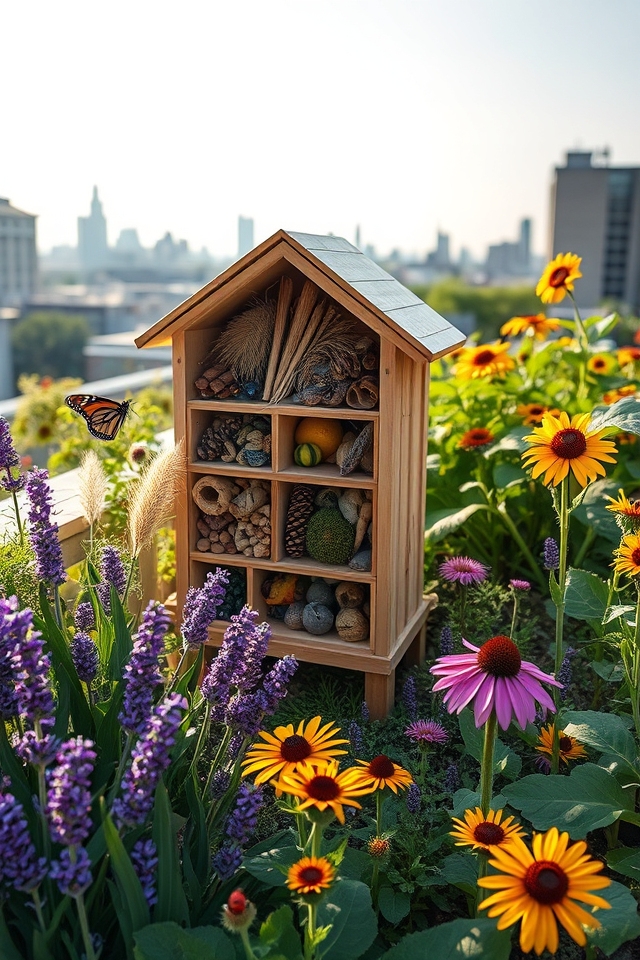
Insect hotels are innovative structures designed to attract beneficial insects, such as bees, butterflies, and ladybugs, to your rooftop garden. By providing diverse nesting and shelter options, they help promote biodiversity and support pollination. Positioning these hotels strategically near flowering plants encourages insect activity, enhances the ecological balance of your garden, and fosters a healthy environment. Crafting an insect hotel can be a fun DIY project and greatly contribute to the sustainability of your rooftop oasis.
Aromatic Plants for a Fragrant Rooftop

Aromatic plants can transform your rooftop garden into a sensory haven, filling the air with delightful fragrances. Consider planting herbs like lavender, rosemary, and mint, which not only smell wonderful but can also be used in cooking. Flowering plants such as jasmine and gardenias add lush scents, while citronella can help keep pesky insects at bay. Incorporating these aromatic plants not only enhances the ambiance but also creates a serene escape in the heart of the city.
Recycled Materials for Eco-Friendly Gardening
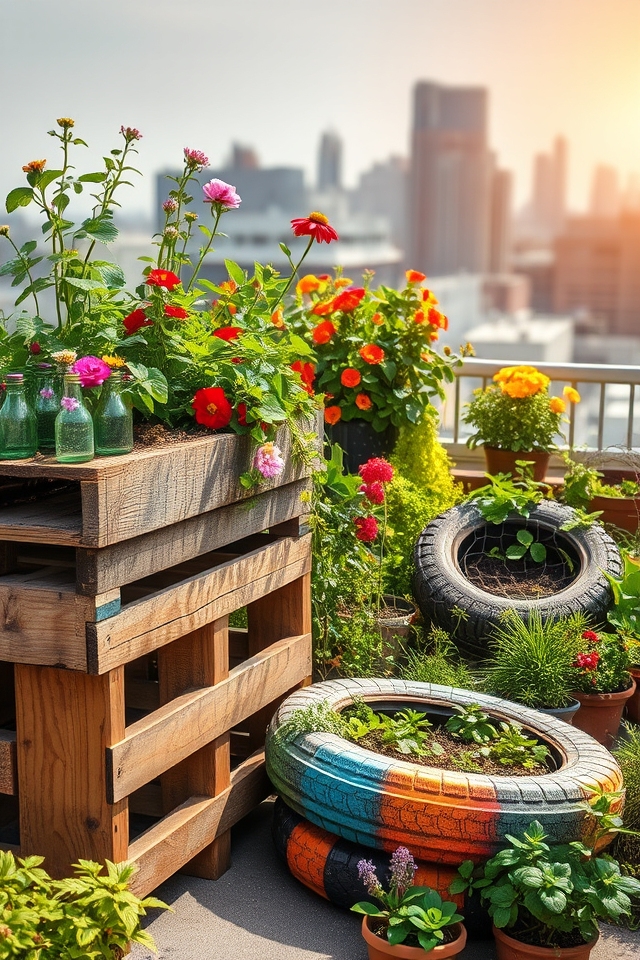
Recycled materials can play an essential role in eco-friendly roof top gardening, promoting sustainability and reducing waste. Items such as old pallets can be repurposed into planter boxes, while used bottles and cans make excellent planters with creative designs. Additionally, repurposing tires can create unique garden beds, and even kitchen scraps can be composted for nutrient-rich soil. By incorporating these materials, you not only save money but also contribute to a greener environment.
Shade Solutions for Hot Roof Spaces
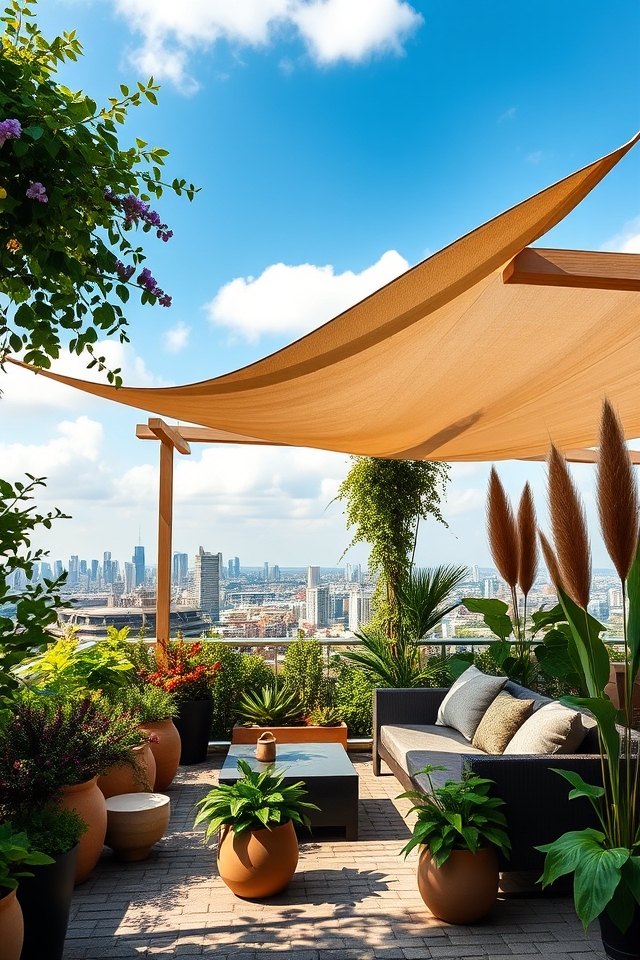
Creating a comfortable roof top garden in hot climates requires effective shade solutions to protect plants and enhance usability. Consider using structures like pergolas, shade sails, or trellises adorned with climbing plants to provide partial cover. Additionally, strategically placed containers or taller plants can create natural shade. Utilizing lightweight fabrics or eco-friendly shading materials also helps reduce heat buildup while allowing light to filter through, promoting a vibrant garden ambiance.
Community Rooftop Gardens: Joining Forces for Greenery
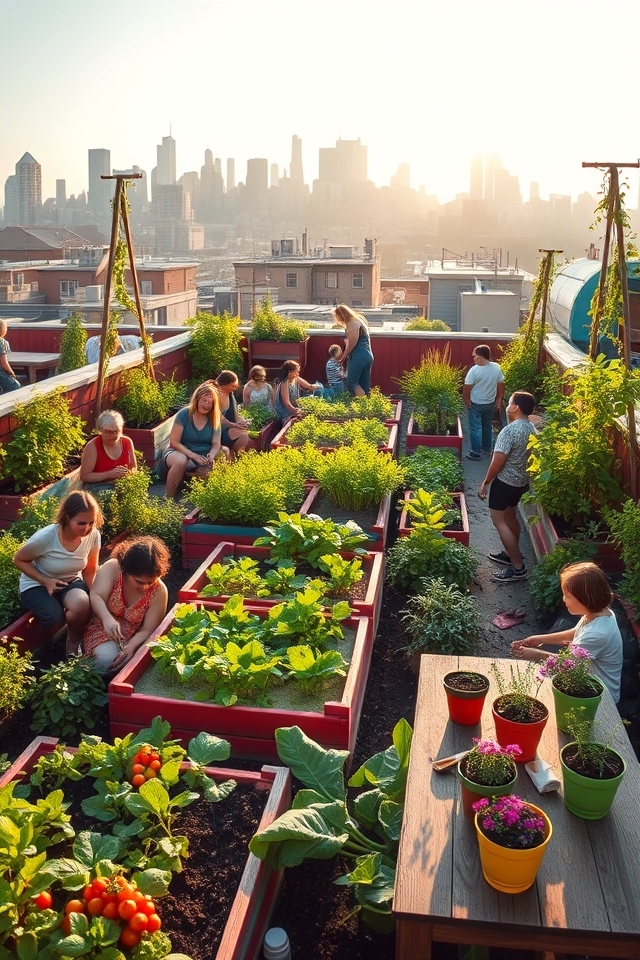
Community rooftop gardens are a fantastic way to unite neighbors while transforming urban spaces into lush green havens. By pooling resources and talents, residents can create shared gardens that not only provide fresh produce but also promote biodiversity and improve air quality. These communal efforts foster a sense of belonging and environmental stewardship, encouraging participants to learn from one another and cultivate a greater appreciation for nature amidst the hustle of city life.
